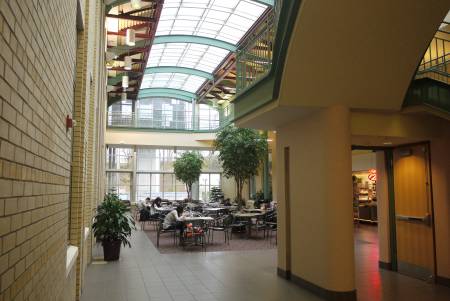An Experimental Design Perspective on Model-Based Reinforcement Learning
Abstract: In many practical applications of RL, it is expensive to observe state transitions from the environment. For example, in the problem of plasma control for nuclear fusion, computing the next state for a given state-action pair requires querying an expensive transition function which can lead to many hours of computer simulation or dollars of [...]
Learning Model Preconditions for Planning with Multiple Models
Abstract: Different models can provide differing levels of fidelity when a robot is planning. Analytical models are often fast to evaluate but only work in limited ranges of conditions. Meanwhile, physics simulators are effective at modeling complex interactions between objects but are typically more computationally expensive. Learning when to switch between the various models can [...]
Leveraging StyleGAN for Image Editing and Manipulation
Abstract: StyleGAN has recently been established as the state-of-the-art unconditional generator, synthesizing images of phenomenal realism and fidelity, particularly for human faces. With its rich semantic space, many works have attempted to understand and control StyleGAN’s latent representations with the goal of performing image manipulations. To perform manipulations on real images, however, one must learn to [...]
Resilient Exploration in SubT Environments: Team Explorer’s Approach and Lessons Learned in the Final Event
Abstract: Subterranean robot exploration is difficult with many mobility, communications, and navigation challenges that require an approach with a diverse set of systems, and reliable autonomy. While prior work has demonstrated partial successes in addressing the problem, here we convey a comprehensive approach to address the problem of subterranean exploration in a wide range of [...]
Simulation-based Planning for Pick-and-Place in Heavy Clutter using Non-prehensile Manipulation
Abstract: Robot manipulation in domestic households, industrial manufacturing and warehouses might require contact-rich interactions with objects in the environment. For pick-and-place style grasping tasks in cluttered scenes, it can be more economical for the robot to rely on non-prehensile actions vis-à-vis deliberate prehensile rearrangement. Non-prehensile actions also let the robot manipulate large and bulky objects [...]
Carnegie Mellon University
Relationships in instance segmentation and anomaly detection
Abstract: This thesis primarily covers work on two different tasks in computer vision: (1) anomaly detection and (2) instance segmentation. Anomaly detection is an underexplored unsupervised problem that has existed in many fields. On the other hand, instance (and panoptic) segmentation is a supervised problem that can leverage the powerful data and key developments from [...]
Next-Gen Video Communication
Abstract: Video communication connects our world. It is necessary in conducting business, educational and personal activities across different geographical locations. However, the quality of an average user’s video communication is dramatically worse than that of professionally created videos in news broadcasts, talk shows, and on YouTube. This is because professionally created videos are often captured with [...]
Carnegie Mellon University
Learning with Diverse Forms of Imperfect and Indirect Supervision
Abstract: High capacity Machine Learning (ML) models trained on large, annotated datasets have driven impressive advances in several fields including natural language processing and computer vision, in turn leading to impactful applications of ML in areas such as healthcare, e-commerce, and predictive maintenance. However, obtaining annotated datasets at the scale required for training such models [...]
MRSD Annual Poster Presentation
Four student teams from the MRSD program will use posters, videos, and hardware to show their project work on robots for room disinfection, search & rescue, increasing human capability via a third arm, and increased-efficiency factory-floor obstacle avoidance.
Carnegie Mellon University
3D Representation Learning for Perception and Prediction: A Modular Yet Highly Integrated Approach
Abstract: Modularized and cascaded autonomy stacks (object detection, then tracking and then trajectory prediction) have been widely adopted in many autonomous systems such as self-driving cars due to its interpretability. In this talk, I advocate the use of such a modular approach but improve its accuracy and robustness by developing different 3D representations for each [...]






